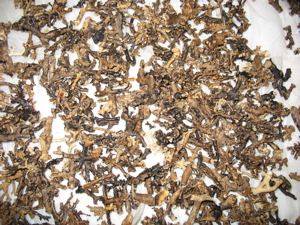We are using the Towcam to check out the seamounts that are located between the Antarctic and South American Continents. This seamount, that we are calling "Interim Seamount” because we do not know if it has a name, is south of 60 degrees. Our mapping has shown that it has a distinctive elongate shape. The Towcam took pictures for about 4 hours during the afternoon to reveal a very rocky and uneven seafloor. Some biology was seen in the form of crabs, corals and sponges. So, it was decided to use the box dredge in a reasonably flat area. The dredge collected basalt rocks and pebbles many of which had small fossilized corals attached to them, as well as shrimp, an isopod, sponges, and a few living corals.

The basalt did not surprise the geologists because this area is a relatively new spreading center, about 3 million years old. It was quickly decided to use the rock dredge as it can be deployed on steeper terrain. The rock dredge picked up more and bigger rocks along with some bigger chunks of coral. The collection was good for both science parties! The night will continue with more box and rock dredges in the hunt for more coral.


Comments